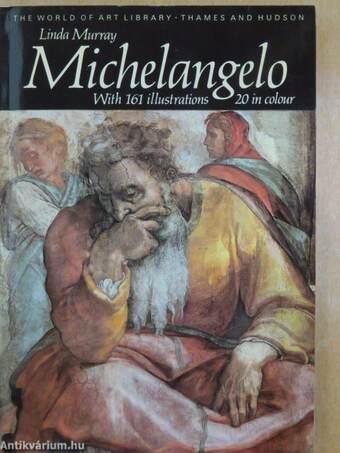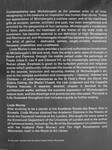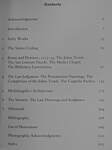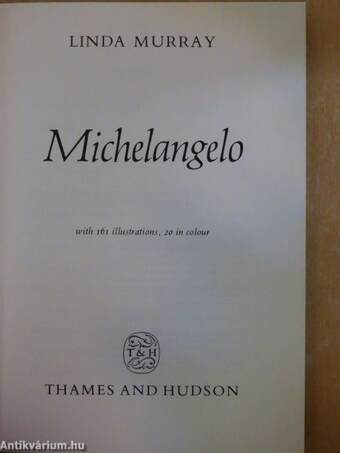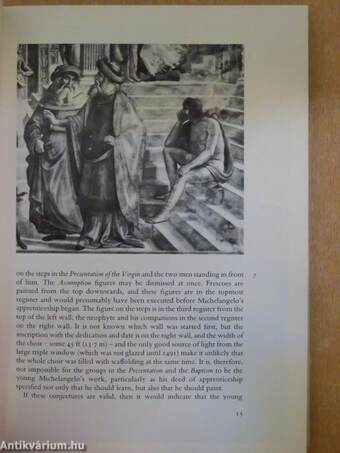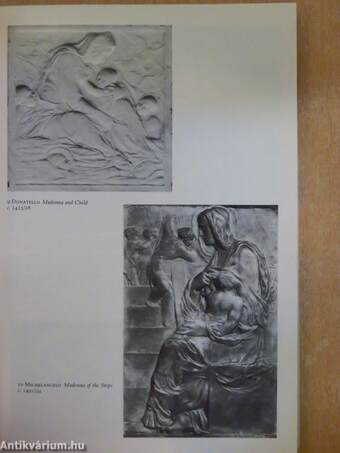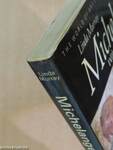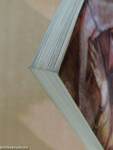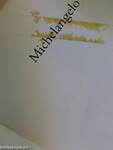1.067.053
kiadvánnyal nyújtjuk Magyarország legnagyobb antikvár könyv-kínálatát

VISSZA
A TETEJÉRE
JAVASLATOKÉszre-
vételek
Michelangelo
| Kiadó: | Thames and Hudson |
|---|---|
| Kiadás helye: | London |
| Kiadás éve: | |
| Kötés típusa: | Ragasztott papírkötés |
| Oldalszám: | 216 oldal |
| Sorozatcím: | The World of Art |
| Kötetszám: | |
| Nyelv: | Angol |
| Méret: | 21 cm x 15 cm |
| ISBN: | 0-500-20174-9 |
| Megjegyzés: | Színes és fekete-fehér fotókkal, reprodukciókkal. |
naponta értesítjük a beérkező friss
kiadványokról
naponta értesítjük a beérkező friss
kiadványokról
Fülszöveg
Contemporaries saw Michelangelo as the greatest artist of ail time, recognizing in his créations an inspiration less human than divine. Today our appréciation of Michelangelo's sublime vision, and of his matchless gifts as sculptor, painter, architect and poet, has been strengthened and enriched by the perspective of four centuries. Michelangelo's vocabulary of form, particularly his treatment of the theme of the maie nude in movement, has become essential to our définition of High Renaissance and Mannerist art, and Michelangelo himself has become the archetype of the artist of genius - dedicated, solitary, single-minded, tormented, harassed, unsatisfied, and undefeated.
Linda Murray's new study provides a lucid and authoritative introduction to Michelangelo's llfe and work, from the artist's early years of triumph in Rome and Florence, through his middle period under the patronage of Popes Julius II, Léo X and Clement VII, to his increasingly spiritual later Roman phase.... Tovább
Fülszöveg
Contemporaries saw Michelangelo as the greatest artist of ail time, recognizing in his créations an inspiration less human than divine. Today our appréciation of Michelangelo's sublime vision, and of his matchless gifts as sculptor, painter, architect and poet, has been strengthened and enriched by the perspective of four centuries. Michelangelo's vocabulary of form, particularly his treatment of the theme of the maie nude in movement, has become essential to our définition of High Renaissance and Mannerist art, and Michelangelo himself has become the archetype of the artist of genius - dedicated, solitary, single-minded, tormented, harassed, unsatisfied, and undefeated.
Linda Murray's new study provides a lucid and authoritative introduction to Michelangelo's llfe and work, from the artist's early years of triumph in Rome and Florence, through his middle period under the patronage of Popes Julius II, Léo X and Clement VII, to his increasingly spiritual later Roman phase. Emphasis is given to the turbulent political and religious events which profoundly influenced the course of Michelangelo's career, to the sources, évolution and recurring themes of Michelangelo's art, and to the complex symbolism and iconography - classical, Hebrew and Christian - of such masterpieces as the St Peter's Pieta, the David, the Sistine Ceiling, the Medici Chapel, the Last Judgment and the Cappella Paolina frescoes. A separate, detailed, chapter is devoted to the architectural works, perhaps the supreme expression of Michelangelo's mature style, and the drawings and poems are also discussed. The book is fully illustrated throughout and includes a guide to further reading.
Linda Murray
After studying to be a painter at the Académie Royale des Beaux-Arts in Brussels, Linda Murray obtained her Academic Diploma in the History of Art at the Courtauld Institute of Art/London. She taught for many years in the Extramural Department of the University of London and is the author of numerous books, including The Art of the Renaissance (in collaboration with her husband Peter Murray) and The High Renaissance and Mannerism, both in the World of Art Library.
On the cover: Jeremiah from the Sistine Chapel Ceiling. Photo Scala. Vissza
Témakörök
- Életrajz > Művészet > Festészet, szobrászat
- Idegennyelv > Idegennyelvű könyvek > Angol > Művészetek > Festészet
- Idegennyelv > Idegennyelvű könyvek > Angol > Művészetek > Művészettörténet, általános
- Idegennyelv > Idegennyelvű könyvek > Angol > Művészetek > Szobrászat
- Idegennyelv > Idegennyelvű könyvek > Angol > Életrajz > Művészet > Festészet, szobrászat
- Művészetek > Művészettörténet általános > Idegen nyelv > Angol
- Művészetek > Művészettörténet általános > Életrajzok > Festők
- Művészetek > Művészettörténet általános > Életrajzok > Szobrászok
- Művészetek > Művészettörténet általános > Korszakok, stílusok > XV. század > Reneszánsz
- Művészetek > Festészet > Korszakok, stílusok > XV. század - Reneszánsz > Egyéb
- Művészetek > Festészet > Életrajzok > Külföldi
- Művészetek > Festészet > Idegen nyelv > Angol
- Művészetek > Szobrászat > Korszakok > Reneszánsz
- Művészetek > Szobrászat > Idegen nyelv > Angol
- Művészetek > Szobrászat > Életrajzok > Külföldi



